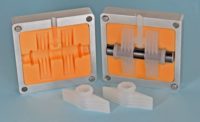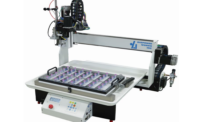XENON announces first benchtop tool with photonic technology

XENON (xenoncorp.com), a company with more than 50 years of Pulsed Light experience, introduces the X-1100, a low-cost benchtop Pulsed Light system that enables researchers to more easily characterize new processes using XENON's proven technology.
What makes this offering special is that it's the first benchtop tool with the unique photonic technology that researchers, scientists and engineers require. This flexible laboratory instrument delivers broadband spectrum, high-intensity Pulsed Light that can be used in a vast number of applications that require rapid photonic exposure.
"At XENON, we saw a great need to create a solution for the global R&D community that could support them in investigating the effectiveness of Pulsed Light for new and emerging applications. The X-1100 gives them that technology in a small package that contains the right capabilities to aid and guide them in their discoveries," says Saad Ahmed, XENON director of engineering.
The X-1100 was designed with R&D in mind. It's the lowest cost high-intensity Pulsed Light system on the market, delivering up to 9 Joules/cm2. It also offers a broadband spectrum of light from ultraviolet to visible to infrared. In addition to its small footprint, the X-1100 plugs into a standard 115v or 220v outlet.
The unit sets up in minutes and offers a simple-to-follow graphical user interface (GUI). The X-1100 makes energy control simple, too. All users do is set the energy value, and the X-1100 calculates the rest of the settings. In addition, the X-1100 stores and recalls a large number of protocols, has a built-in diagnostic feature, and is available with a family of accessories such as optical lamp housings and sample chambers.
Lou Panico, XENON CEO, adds, "We're confident that with the X-1100 researchers and scientists have a tool they can use to open new doors beyond the many current applications benefiting from XENON's proven Pulsed Light systems. To get researchers thinking about the possibilities, we start conversations by asking them what they could do with 9 Joules/cm2 of energy delivered in 7 milliseconds? The answer is very often, 'Wow, I don't know, but I can't wait to find out.'"
Looking for a reprint of this article?
From high-res PDFs to custom plaques, order your copy today!






